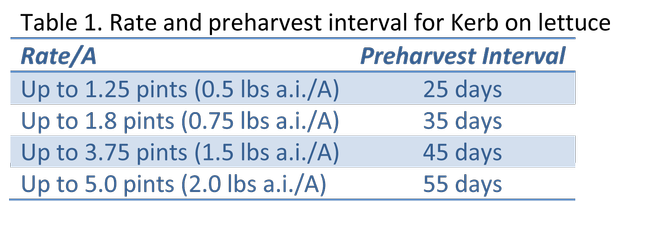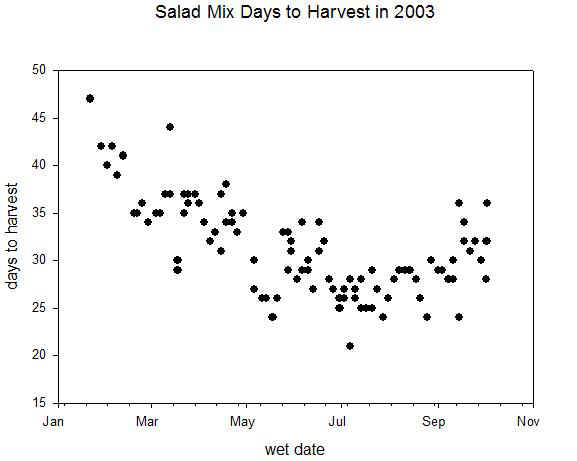On January 12, 2016 the Federal EPA label for Kerb SC was reinstated for leaf lettuce. The registration on leaf lettuce was pulled in 2009 and Dow AgroSciences worked in the intervening years reregister Kerb. The new label allows for the use of Kerb from 25 to 55 day prior to harvest (Table 1). The 25 day preharvest interval is significant because it allows the use of Kerb on baby lettuce which is typically harvested in 25-30 days after the first wet date during the summer months (Figure 1). The 25 day preharvest interval gives growers an option for controlling weeds in high density plantings; this change is very helpful because high density plantings cannot be cultivated and weeds that occur must be removed by hand prior to mechanical harvest to assure a weed free product (Figure 2). The rate of Kerb for use in the 25 day preharvest interval is limited to 1.25 pints (0.5 lbs a.i./A). This is a low rate of Kerb and we had not done any research on the effect of this material at that rate. As such we conducted a trial this spring to test the effect of this rate on weed control. The trial was located in a field of green romaine baby lettuce. The soil was Rincon clay loam and the rates evaluated are shown in Table 2. Nettle leaf goosefoot was the dominant weed at the site and the higher rates of Kerb (1-2.0 lbs a.i./A) were effective at reducing its population. The 0.5 lb a.i./A rate was weaker on this weed, but did show a trend of providing limited control on the second evaluation date. Other weeds at this site had lower populations, however the data on Shepherd's purse indicate that the low rate of Kerb looked promising in this trial. Needless to say, we will continue to conduct evaluations on the 0.5 lb a.i./A rate of Kerb to better document the level of control that it can provide to a more thorough spectrum of weeds.



